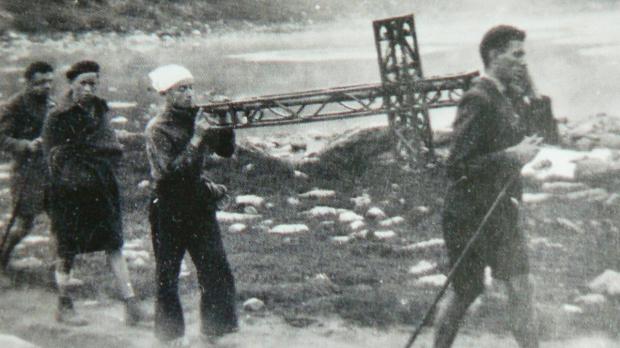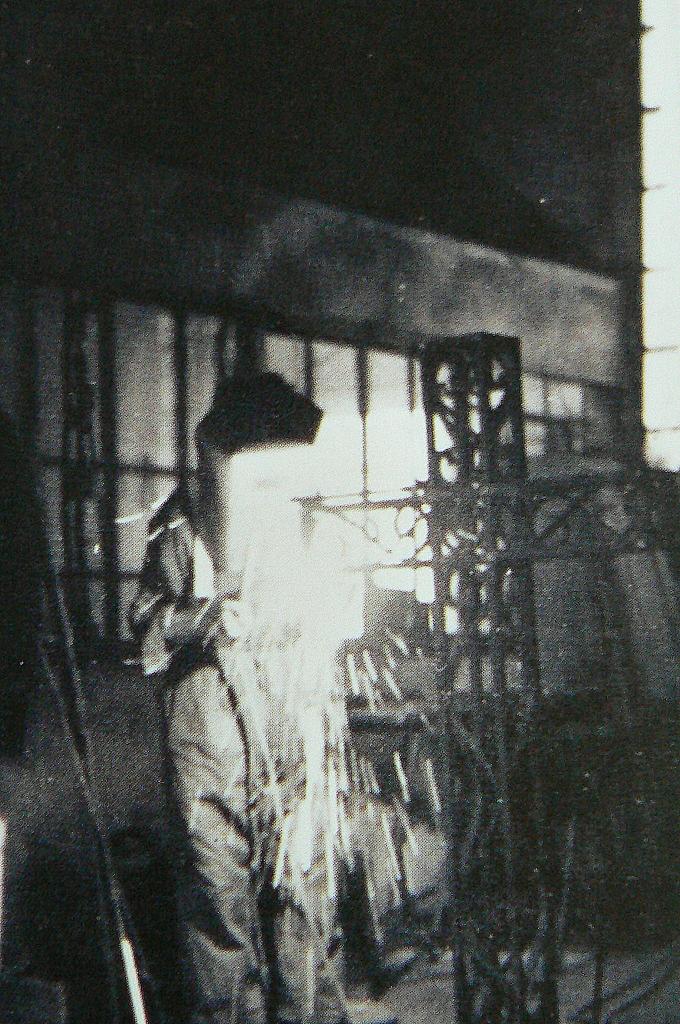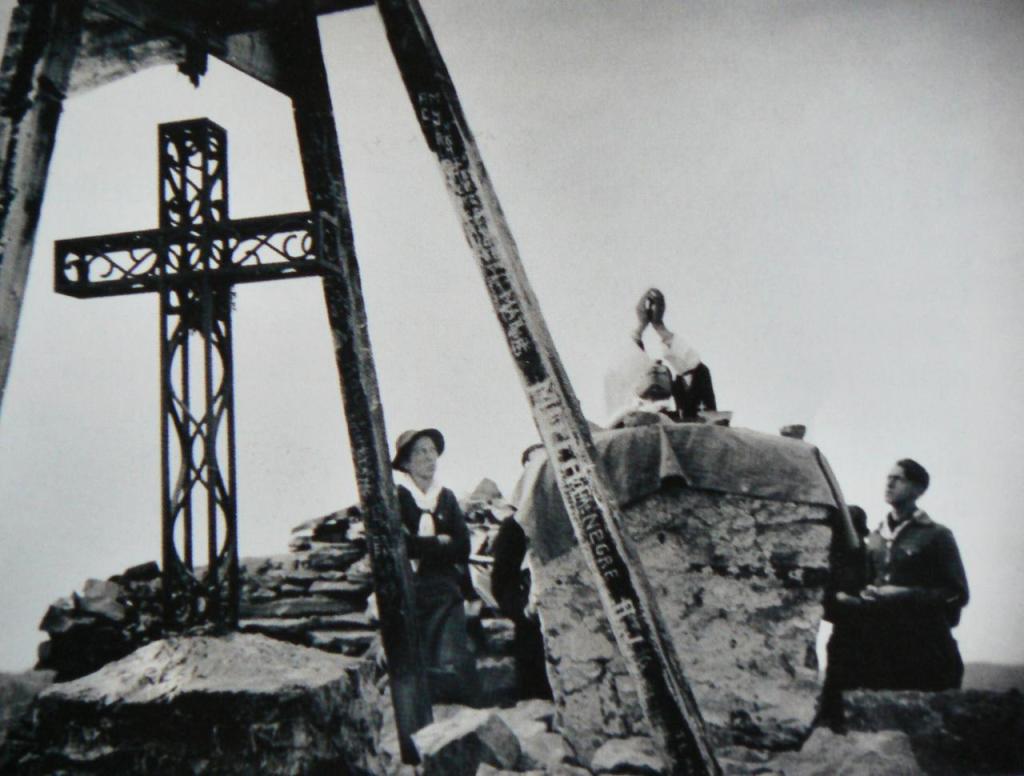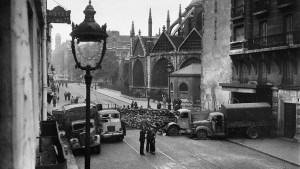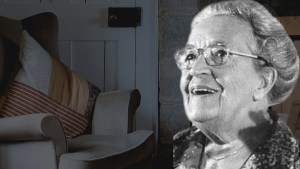Eighty years ago, between July 18 and 28, 1943, in the midst of the Nazi German occupation, a group of French Catholic scouts and their guides decided to erect a wrought-iron cross on the summit of Mount Canigou in the French Pyrenees. This is the story of an adventure that was above all a daring leap of faith.
Serving their country by joining Resistance efforts
During the years of World War II, Catholic scouts and guides in France weren’t idle. Many decided to join the Resistance in various ways, faithful to their scout’s promise to serve their country.
At the beginning of 1943, a scout group from the city of Perpignan (southern France), including the guide Jo Tasias, undertook a crazy initiative: to erect a cross on the summit of Mount Canigou, which towers 2,783 m (9,134 ft) above the French Catalonian countryside. The idea was to make a pilgrimage to pray for occupied France and for the return of prisoners.
To build the cross, the scouts enlisted the help of a friend of their chaplain, Georges Margouet, a blacksmith. He completed the cross in July 1943.
The cross was made between February and July 1943 on the premises of the scout group’s home base. The scouts borrowed an anvil to forge the cross’s components.
Carrying the Cross
Carrying the 112 kg (247 lb) cross to its destination gave the scouts and guides the opportunity to pray the Way of the Cross, accompanied by the priests who accompanied their undertaking. The conditions were tough, especially as they walked part of the way barefoot. The task was even more physically difficult due to war-related malnutrition.
Under cloudy skies, the scouts climbed the more than 6,000 feet of ascent from the town of Prades to reach the Cortalets refuge nearer to the peak. The necessary equipment — mortar, shovels, and ropes — was hauled in a handcart. The refuge served as a base camp for the ten days of work ahead.
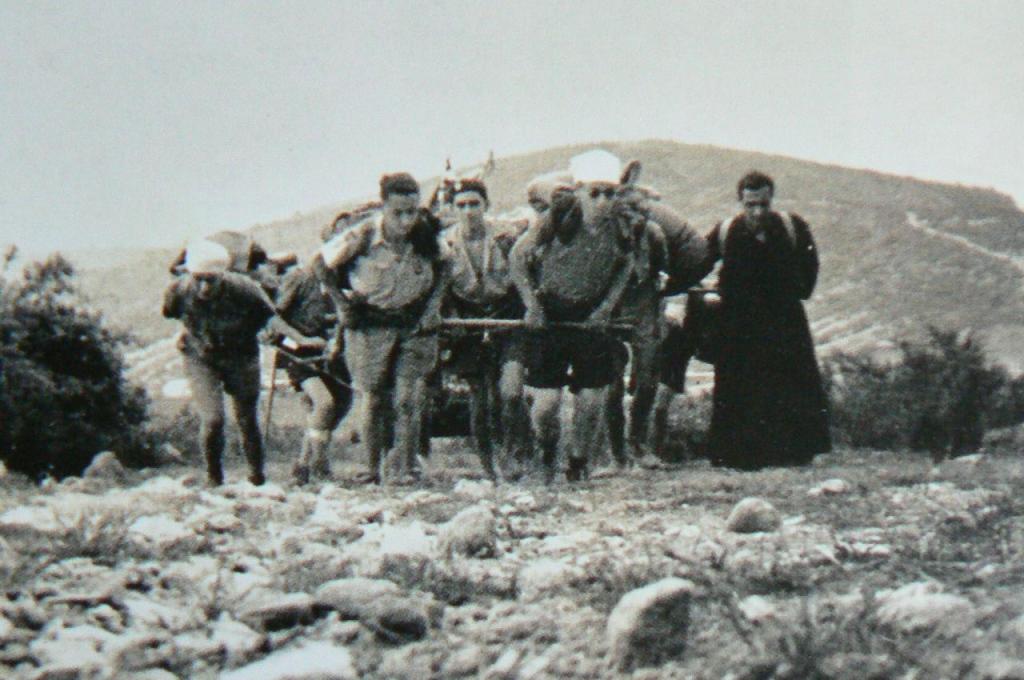
At last, they finished building the base, and the cross was erected on July 26, 1943. This emotional moment was marked with a blessing and the celebration of mass on the moutaintop’s orientation table.
Jo Tasias recounts in his notes: “Once we reached the peak, we started looking for a place to set up the altar, and finally chose the orientation table. Father prepared an altar on a cloth held down by a few stones. What a beautiful mass! One [celebrated] in front of our cross, [Jesus’] cross, in the cold at 3000 meters of altitude. Ah yes, what a beautiful and moving mass!”
Overcoming a setback
The story doesn’t end there. In fact, the scouts had not requested any authorization, knowing the Nazi occupiers would deny it. Consequently, they had unknowingly set up the cross too close to the geodesic point, a landmark that marks geographic coordinates. In 1960, unscrupulous employees of the geographical service dynamited the cross because it interfered with their work.
However, the Scouts decided to put up a new cross to take its place. They salvaged the pieces of the old cross that had been dumped on the mountain slopes, and set about reforging it. At the same time they had a new, larger cross made — 5’9” (1.80 m) high and a yard wide.
This time, Jo Tasias took the precaution of requesting a concession of one square meter of land for the purpose, further away from the geodesic point. The new cross was inaugurated on July 30, 1961, in a larger ceremony than the previous one, which had forcibly been clandestine.
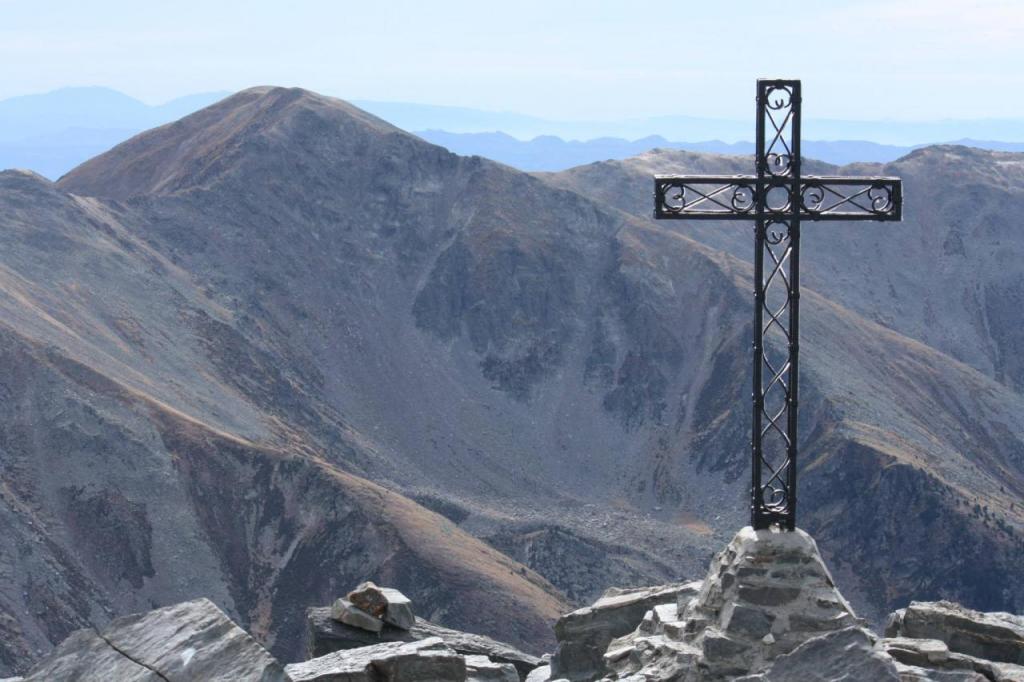
The original, repaired cross was installed in the 1960s near Saint-Jean d’Albère in the eastern Pyrenees, at the entrance to the monastery of the Hermits of Mary (now the monastery of the Sisters of Bethlehem).
